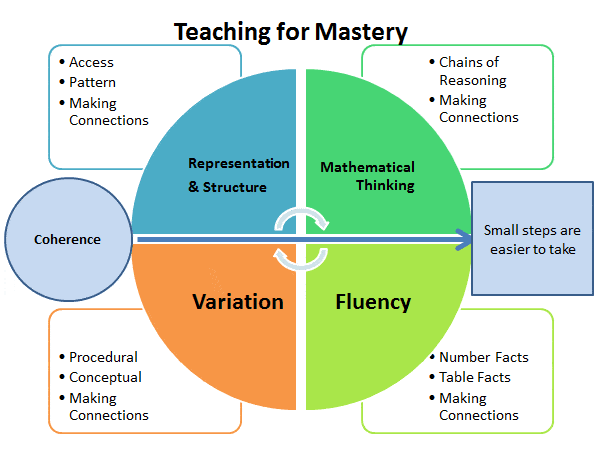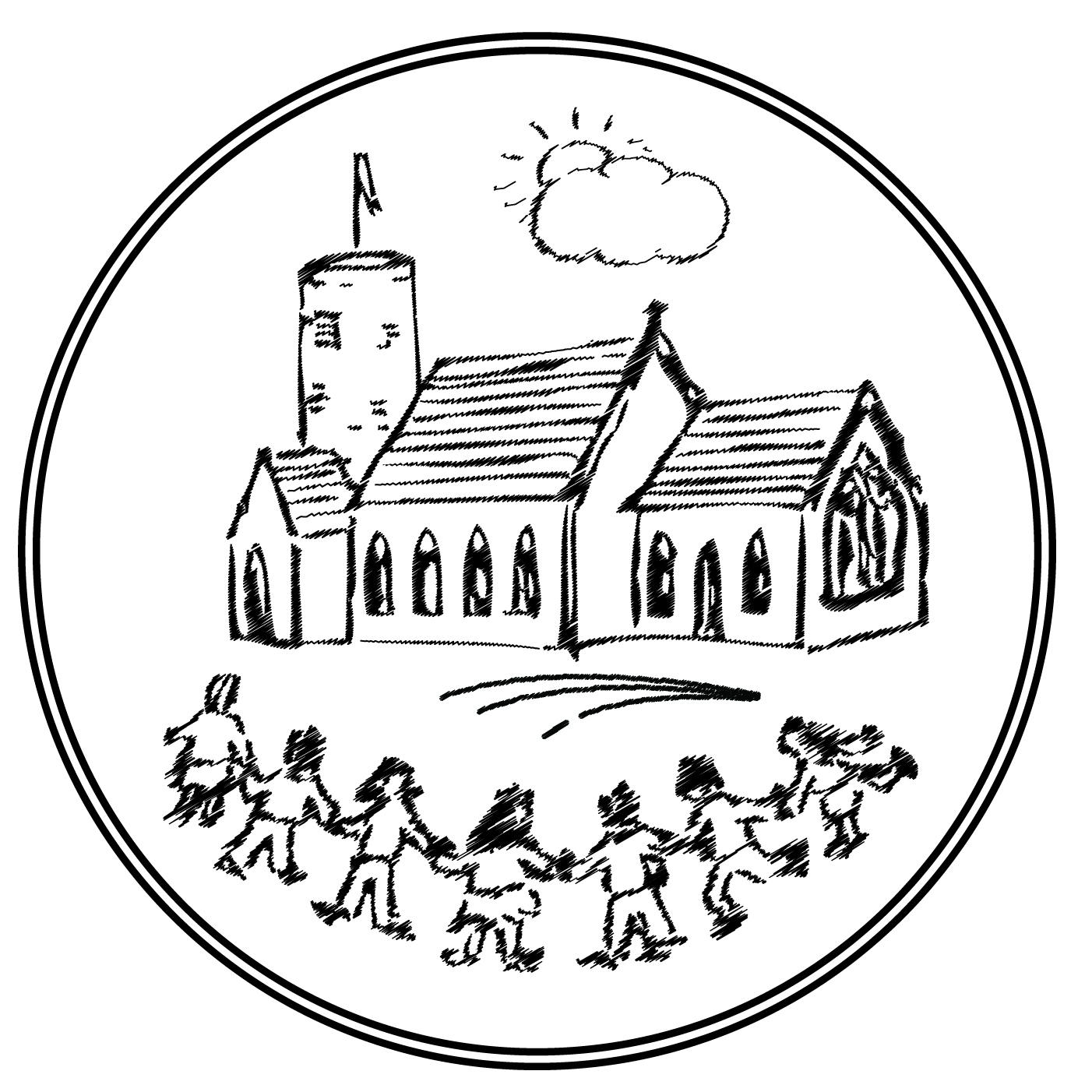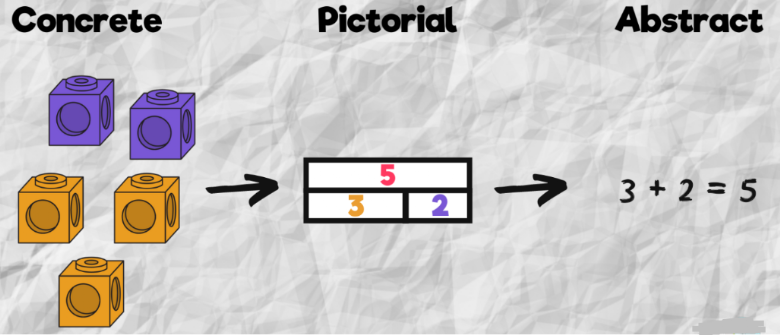Mathematics
Our school vision ‘Curious Minds, Open Hearts & Joy of Learning’ is at the heart of all we do.
Curious Minds -At Homefield, we seek to inspire our children to develop a curiosity and fascination about the world, including the world of mathematics. Our curriculum allows opportunities for children to be inquisitive and explore the patterns and relationships that exist in maths.
Open Hearts – Maths is a universal language throughout the world and by building a secure understanding, our children develop essential skills (such as problem solving, communication, logical thinking and attention to detail) that are used on a daily basis to enrich their lives and those of others.
Joy of learning –Our aim is for all children to achieve a sense of enjoyment in maths and realise that the power and beauty of mathematics is joyful and all around them.
Our Mathematics Curriculum
In line with the National Curriculum Objectives for Mathematics, our intent is that all pupils:
- become fluent in the fundamentals of maths, including through varied and frequent practise with increasingly complex problems over time, so that pupils develop conceptual understanding and the ability to recall and apply knowledge.
- reason mathematically by following a strategy, using previous knowledge to conjecture relationships, develop an argument, justification and proof using mathematical language.
- can problem solve by applying their mathematics to a variety of routine and non-routine problems with increasing sophistication, including breaking down problems into a series of simpler steps and persevering in seeking solutions.
At Homefield Primary School, each and every child is a mathematician. Our children are fascinated by the power of maths and how it connects their lives at school and beyond. Maths is a universal language that all our children become confident and fluent in so we cn all communicate with one another more effectively. Our children understand that maths is all around us; it is a fun and fascinating subject where interesting connections can be made within the subject itself and the wider world.
At Homefield we want Mathematicians to be able to articulate their thoughts accurately using the correct vocabulary. Furthermore, learners should be developing their ability to explain, reason and justify their ideas through making conjectures, noticing patterns and making connections to other mathematical concepts or representations.
We want learners to be able to tackle difficult problems creatively and resiliently using a range of metacognitive strategies throughout. At Homefield we believe that making connections between problems, strategies, concepts and representations is an essential component to becoming an excellent mathematician.To support this expectation we will be adopting the following 7 “Working mathematically” approaches at the heart of our daily teaching.
Curriculum Implementation
- At Homefield, children study mathematics daily following the White Rose Maths Scheme of Learning a adapted to the needs of the children. White Rose Maths is a blocked scheme, which allows for depth and breadth of learning within each strand of mathematics.
- Through out 2024 - 2025 we will be adopting the following seven Working Mathematical approaches at the heart of our daily teaching as:
- I can make sense of problems and persevere in solving them.
- I can reason about Number abstractly and quantitatively.
- I can conjecture and convince to reason with self and others.
- I can use appropriate manipulatives and resources to represent mathematical thinking
- I can explore and use a variety of mathematical structure.
- I can be precise to communicate mathematical thinking.
- I can express regularity through specialising and generalising.
- Mathematics at Homefield is taught using our agreed teaching pedagogy which includes the 6 part lesson process:

- Homefield adopts the White Rose Maths Curriculum. Our curriculum is well sequenced and progressive, ensuring that the children build their knowledge cumulatively from the Early Years to Year 6
- Teachers supplement the White Rose curriculum by using a range of resources, including their “Small Steps to Progression”. These small steps break down which learning objectives children need to master, and in what order, to gain a deep understanding of maths topics, and gradually develop their reasoning and problem-solving skills. This enables teachers to plan in small steps according to the needs of the children, making variations and adaptions to ensure that all children can be successful mathematicians, regardless of their starting points.
- At the heart of White Rose Maths is maths mastery, an approach that’s sparked a positive, growth mind set towards mathematics in teachers, parents and pupils. This is an approach that we are currently developing through CPD and external support from ‘Angles Maths Hub – Embedding Mastery’
Early Years
- The Early Years supplement White Rose curriculum, using materials from ‘Master the Curriculum’ to ensure that all children have a strong foundation in early number and mathematical development.
- Within EYFS, pupils begin to explore Mathematics through discreet teaching alongside enhanced and continuous provision. Pupils develop a strong grounding in number through frequent and varied opportunities to build and apply new learning. Through using manipulatives, including small pebbles and tens frames for organising counting - children will develop a secure base of knowledge and vocabulary from which mastery of mathematics is built.
- Children are provided with opportunities to count, develop a deep understanding of the numbers to 10, the relationships between them and the patterns within those numbers. In addition, through our continuous provision, children are provided with rich opportunities to develop their spatial reasoning skills across all areas of mathematics including shape, space and measures.
- Our culture allows children to develop positive attitudes and curiosity in mathematics, look for patterns and relationships, spot connections, ‘have a go’, talk to adults and peers about what they notice and not be afraid to make mistakes.
KS1
- Within KS1, pupils continue to explore Mathematics through discreet teaching alongside enhanced and continuous provision. Pupils develop a strong grounding in number through frequent and varied opportunities to build and apply new learning. Through using manipulatives, including base ten, place value counters, Numicon, and beadstrings children will develop a secure base of knowledge and vocabulary from which mastery of mathematics is built.
- In addition, through our continuous provision, children are provided with rich opportunities to develop their numerical and spatial reasoning skills across all areas of mathematics including shape, space and measures.
-
All children experience daily ‘fluency’ to embed key number and calculating skills. This helps to remove barriers for children when reasoning and problem solving. We introduce the use of TimesTableRockStars (TTRS) to promote the fluency of multiplication and related division facts.
-
White Rose block assessments are used to identify gaps and inform current teaching adaptions to our curriculum to challenge every child to succeed in Mathematics. Therefore the White Rose Curriculum is adapted to meet the needs of our children through careful teacher assessment which informs the planning of each block/lesson.
KS2
-
Within KS2, pupils progress to explore Mathematics through more discreet teaching. Pupils develop a strong grounding in number through frequent and varied opportunities to build and apply new learning. Through using manipulatives, including place value counters, Numicon, and Cuisenaire Rods children will develop a secure base of knowledge and vocabulary from which mastery of mathematics is built.
-
All children experience daily ‘fluency’ to embed key number and calculating skills. This helps to remove barriers for children when reasoning and problem solving. We continue to use of TimesTableRockStars (TTRS) to promote the fluency of multiplication and related division facts.
-
White Rose block assessments are used to identify gaps and inform current teaching adaptions to our curriculum to challenge every child to succeed in Mathematics. Therefore the White Rose Curriculum is continuously adapted to meet the needs of our children through careful teacher assessment which informs the planning for the following block/lesson.
Concrete, Pictorial and Abstract (CPA) learning underpins the representation and structure element for teaching for mastery across all of the school. CPA allows our children to engage with a wide and varied range of concrete manipulatives and abstract methodologies. Cohesive use of CPA is a fundamental part of mastery of mathematics for all learners so concrete and pictorial references scaffold and strengthen our understanding of Mathematics.
White Rose Yearly Overviews
Year 1
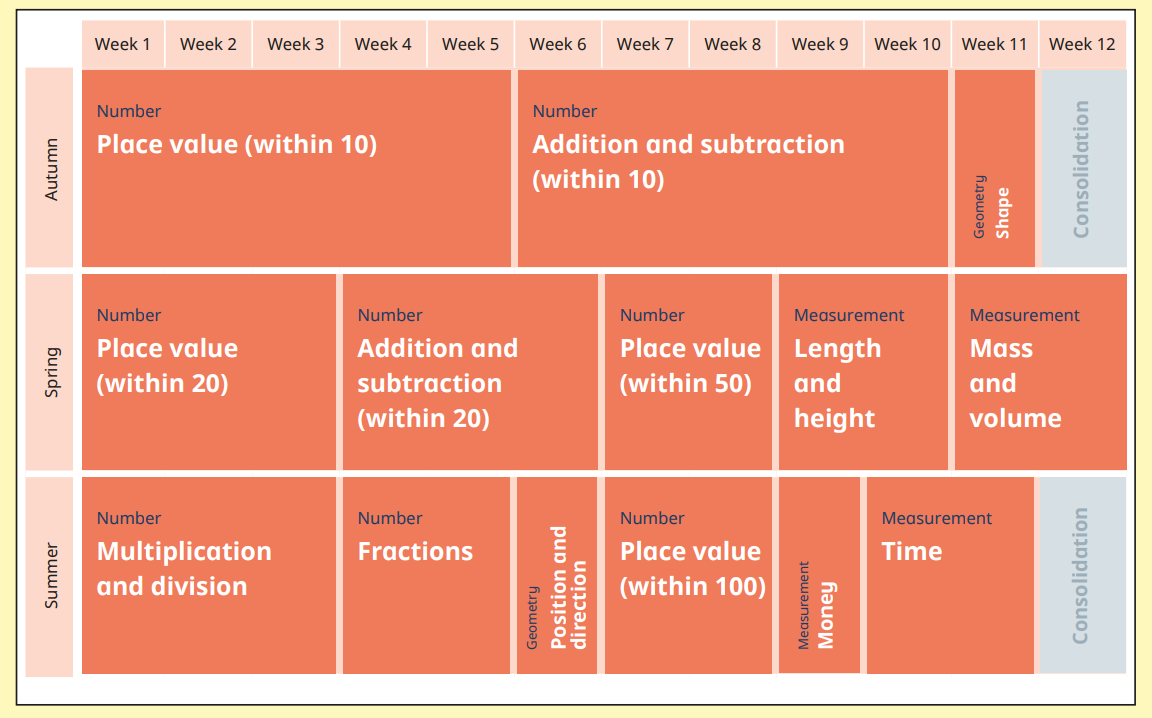 Year 2
Year 2 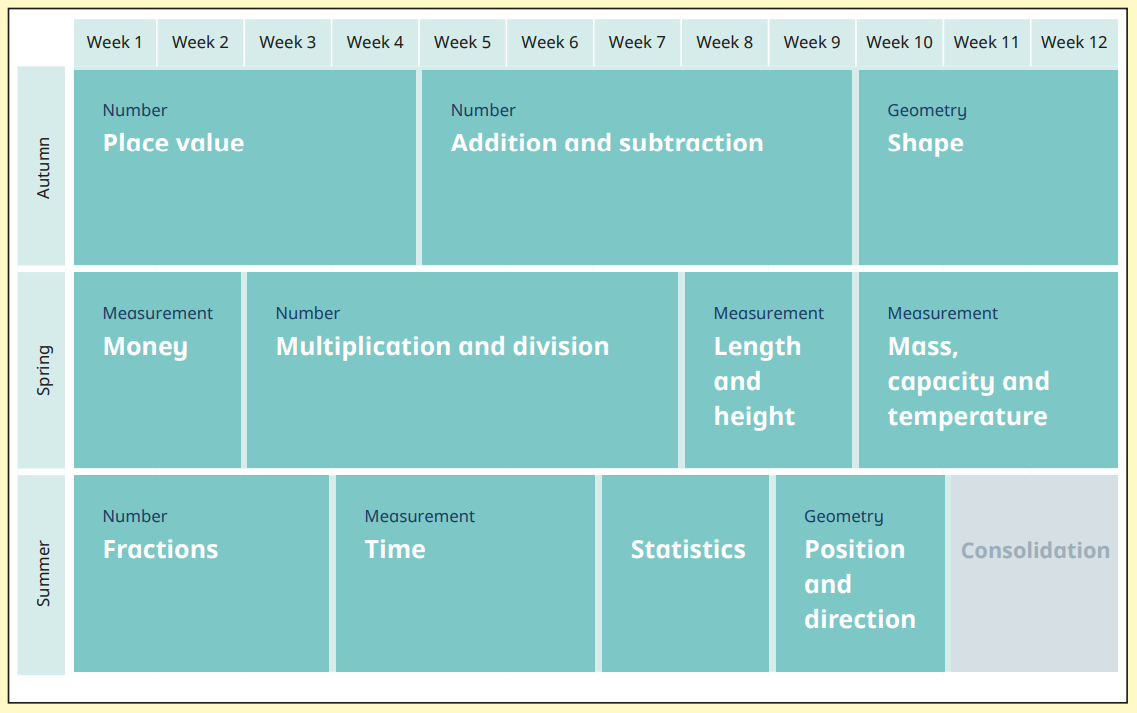
Year 3
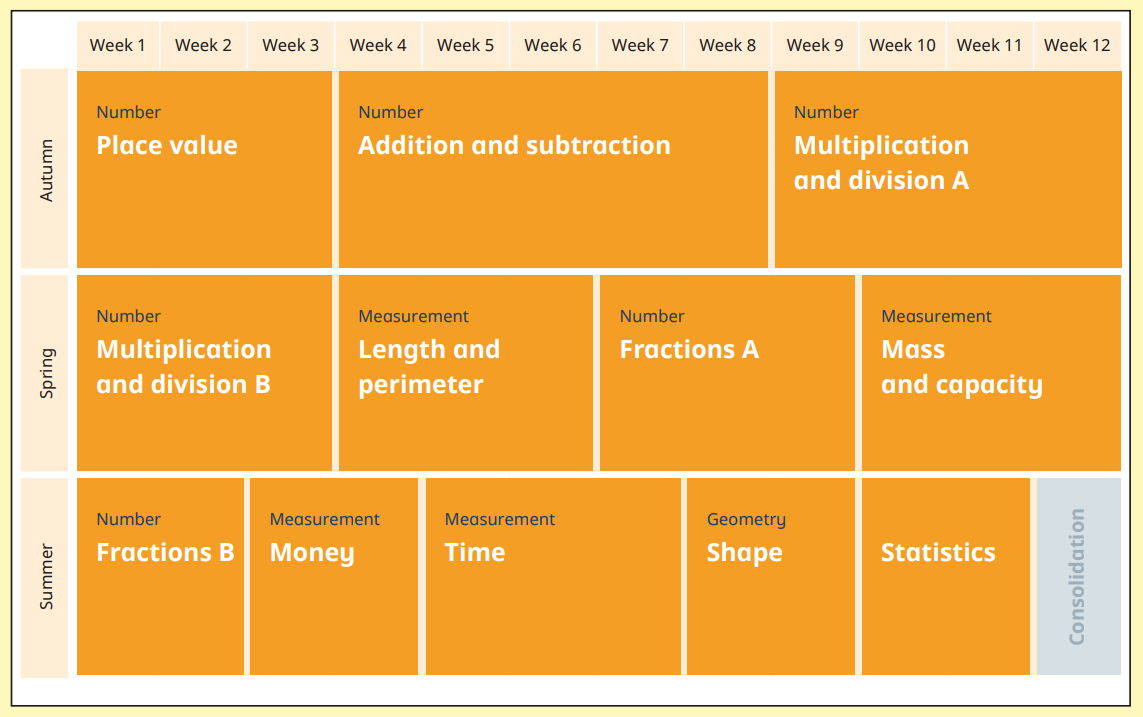 Year 4
Year 4 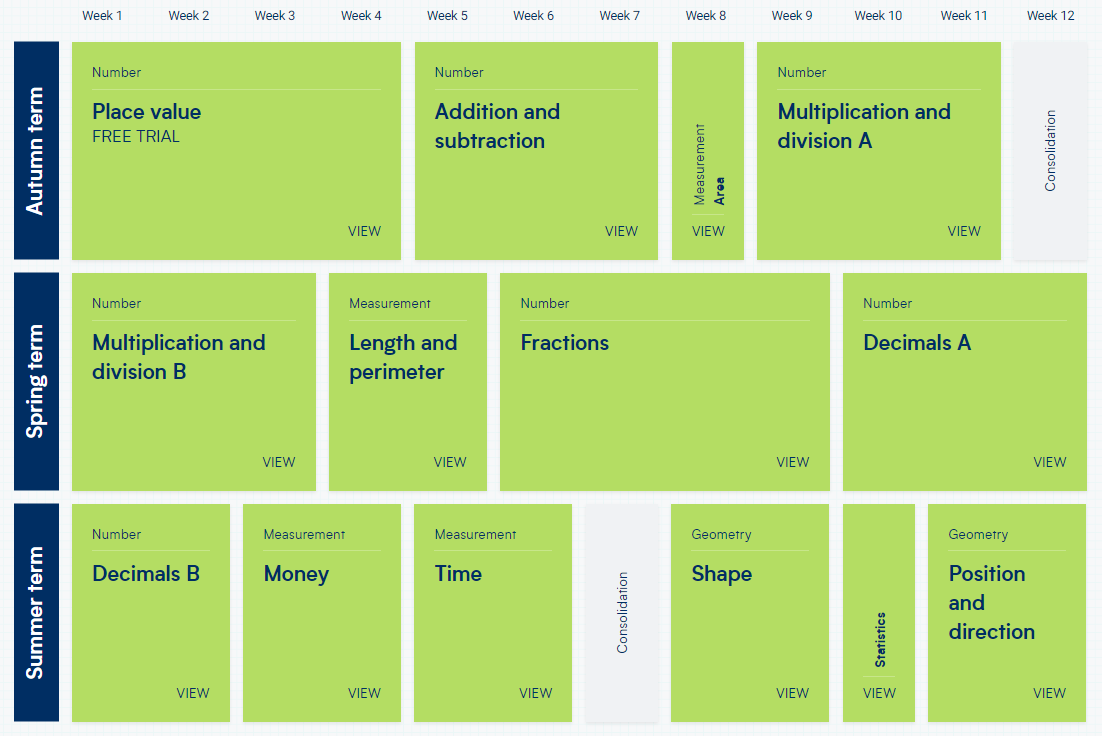
Year 5
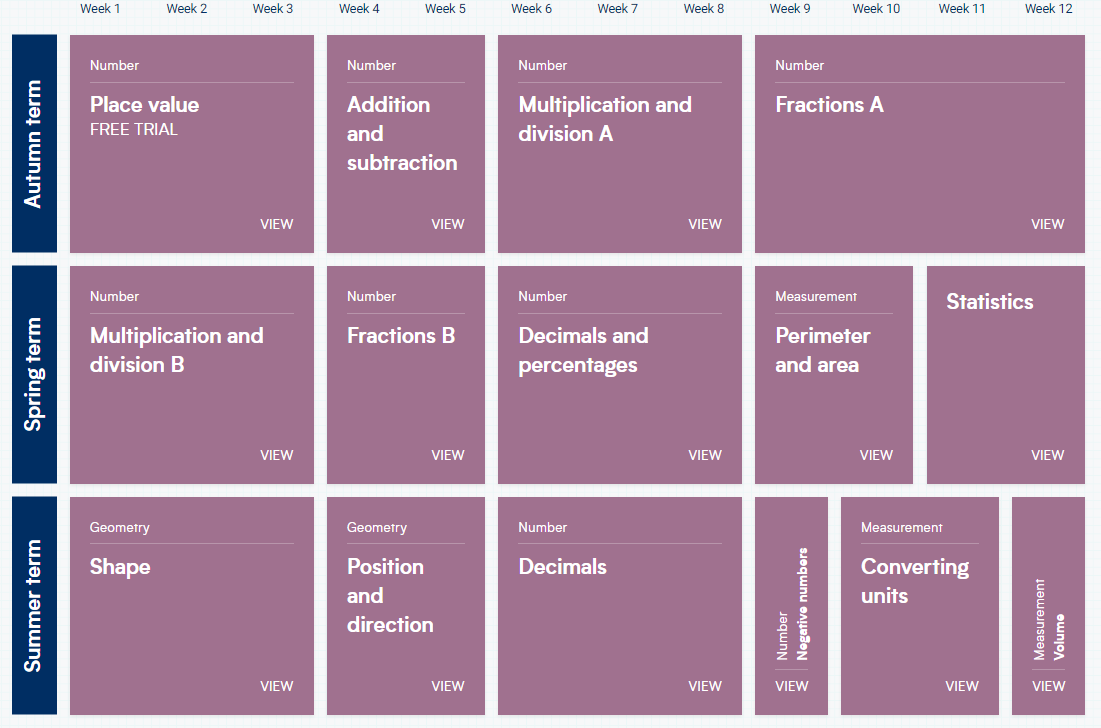 Year 6
Year 6 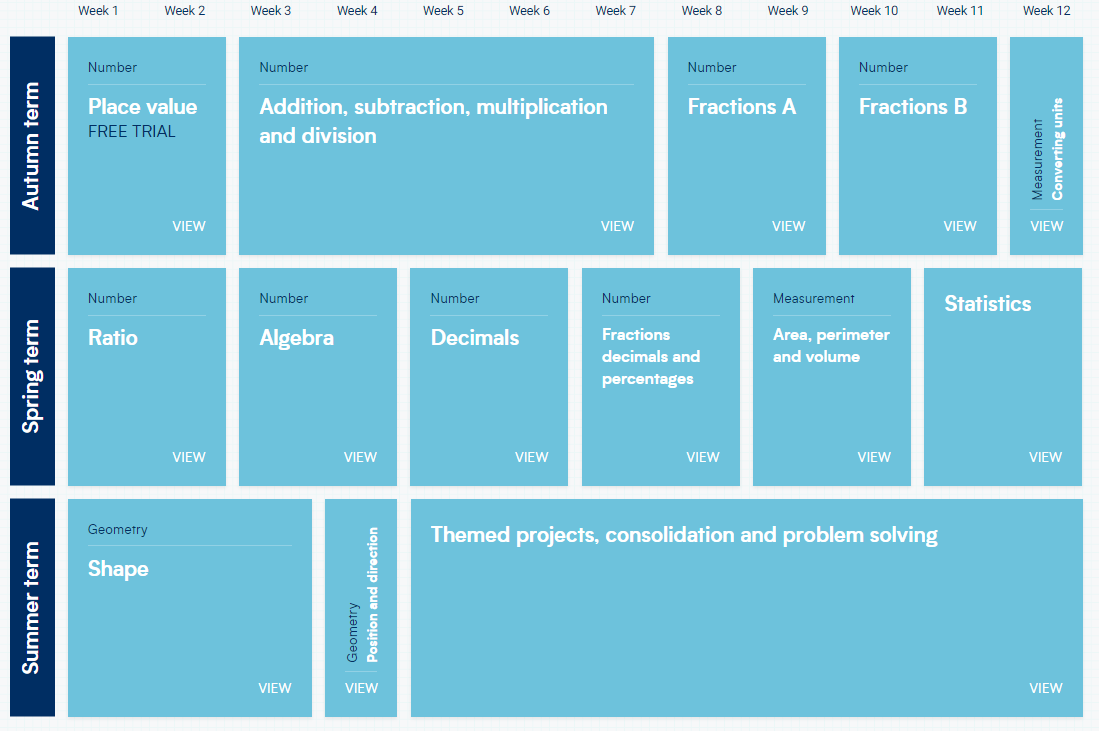
Mathematics Mastery
Central to our approach are the 5 Big Ideas which underpins mastery mathematics:
- Coherence
- Representation and Structure
- Mathematical Thinking
- Fluency
- Variation
Mathematics teaching for mastery assumes everyone can learn and enjoy mathematics.
Mathematical learning behaviours are developed such that pupils focus and engage fully as learners who reason and seek to make connections.
